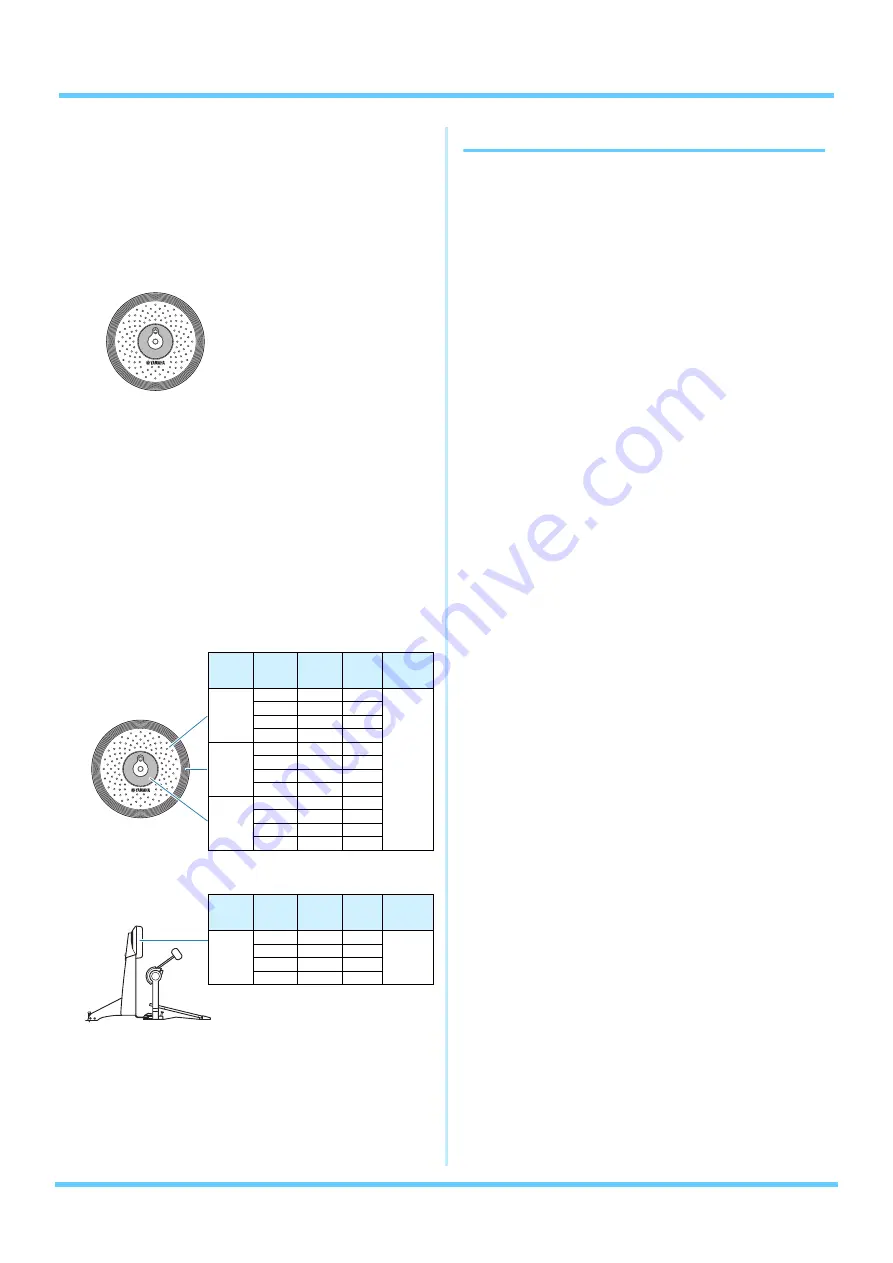
Internal Design of the DTX700
DTX700 Reference Manual
4
Instrument assignments for trigger input jacks
Assigning voices individually to each trigger input source can
be quite time consuming. In order to speed up this process, the
DTX700 features instrument parameters that group together the
drum voices assigned to the multiple trigger input sources cor-
responding to each trigger input jack – or in other words, the
drum voices assigned to each pad.
Voices grouped as kits
For most drummers, the preset drum kits built into the DTX700
are sufficient to provide a wide range of variation in perfor-
mances. If, however, you wish to customize these presets, you
can simply change the instrument set for each trigger input jack
to assign new voices to each of the corresponding pad’s trigger
input sources. If you wish to go even further, meanwhile, you
can also change voice assignments on an individual trigger
input source basis to create drum kits finely tuned to your indi-
vidual needs
.
Sounds Produced Using the Pads
Whenever the DTX700’s internal tone generator receives a trigger
signal produced by striking a pad or by operating a controller, it will
play the voice or song assigned to that pad or controller. As
described below, three different types of assignment are supported –
namely, voices, songs, and waves.
• Voices
Drum sounds such as snares, bass drums, and cymbals; percus-
sion sounds; and pitched-instrument sounds such as piano,
xylophone, and guitar.
• Songs
Phrases containing performance data for a range of different
instruments.
• Waves
Audio files imported into the DTX700 from a variety of
sources.
The Menu area’s Kit/Voice page is used to assign voices, songs,
and waves to pads and controllers. On that page, available assign-
ments are categorized by musical instrument type (in the case of
voices), as songs, or as waves. While these three assignment types
can all be defined for pads in the same way, it is important to
remember that each type plays in a different way and is configured
using different parameters.
Voices
The DTX700 comes preloaded with a vast library of drum
sounds, such as snares, bass drums, and cymbals, together with
a broad spectrum of percussion-instrument sounds. Also
included are many pitched instruments, such as piano, xylo-
phone, and guitar. The term “voice” is used to refer to these
built-in instrument sounds. Drum and percussion voices from
this collection are not rooted at one specific pitch; instead, you
can intuitively adjust their tuning in order to match the sounds
of other instruments. Meanwhile, pitched-instrument voices
such as piano and guitar can be assigned to pads with a specific
pitch setting, thus allowing you to play several different notes
together to produce chords; in addition, you can also have pads
trigger successive notes from a phrase each time they are
struck, making it possible to play melodic parts
.
With the timing and strength of your playing reflected in the
sound produced by preset voices, you can perform with practi-
cally the same level of expressiveness as afforded by acoustic
instruments.
Choosing instruments for each trigger input jack
By selecting an instrument, all of the
voices assigned to a pad’s three trigger
input sources can be changed together.
Three-zone pads (like the PCY135):
Single-zone pads (like the KP65):
Trigger
input
source
Layer
*1
MIDI
note
number
Layer
*2
Instrument
Crash1Bw
Layer A
Note No.
Voice
Instrument
Layer B
Note No.
Voice
Layer C
Note No.
Voice
Layer D
Note No.
Voice
Crash1Eg
Layer A
Note No.
Voice
Layer B
Note No.
Voice
Layer C
Note No.
Voice
Layer D
Note No.
Voice
Crash1Cp
Layer A
Note No.
Voice
Layer B
Note No.
Voice
Layer C
Note No.
Voice
Layer D
Note No.
Voice
Trigger
input
source
Layer
*1
MIDI
note
number
Layer
*2
Instrument
Kick
Layer A
Note No.
Voice
Instrument
Layer B
Note No.
Voice
Layer C
Note No.
Voice
Layer D
Note No.
Voice
*1: See
for details.
*2: Sounds set using the VoiceCategory
and VoiceNumber parameters from
the Menu area’s Kit/Voice page.




























